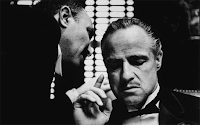Camera Angles
Notes from introduction to film studies lesson.
Cinematography is the name given to techniques used to capture images.
Frames is the name given to everything that is shown in one image.
The most common frames used are:
Extreme Long Shot (Establishing shot): Large amount of landscape to establish the setting
Long shot: More specific view of setting may show where action will take place
Two shot: Complete view of characters showing full costumes and stance/levels
Mid Shot: Only showing from waist up. Shows facial expressions and interactions with others
Close Up:Shot of face. Shows emotion and creates empathy

Extreme Close Up: Part of a face or object. Creates an intense mood and interaction between
character and viewer
Camera Angles are the way in which the camera is positioned.
Commonly used camera angles include:
Birds eye view: All in the shot is part of the wider scheme. People seem insignificant.

High angle: The setting swallows up the objects. Object appears weak
Eye level: The viewer feels as if he is there watching the scene face to face. Can make the viewer feel
unsafe
Low angle: Creates confusion and makes the viewer feel dominated by the characters
Canted Angle: Tilted shot that creates instability and is commonly used during fights.
Camera movements include:
Pan: Horizontally scans a scene
Tilt: Vertically scans a scene
Tracking: Camera moves along side the action
Hand held: Creates realism and makes audience feel part of the scene
Zoom: Changes position of audience and changes frame
Aerial shot: used to establish a setting from above
Cinematography is the name given to techniques used to capture images.
Frames is the name given to everything that is shown in one image.
The most common frames used are:
Extreme Long Shot (Establishing shot): Large amount of landscape to establish the setting
Long shot: More specific view of setting may show where action will take place
Two shot: Complete view of characters showing full costumes and stance/levels
Mid Shot: Only showing from waist up. Shows facial expressions and interactions with others
Close Up:Shot of face. Shows emotion and creates empathy

Extreme Close Up: Part of a face or object. Creates an intense mood and interaction between
character and viewer
Camera Angles are the way in which the camera is positioned.
Commonly used camera angles include:
Birds eye view: All in the shot is part of the wider scheme. People seem insignificant.

High angle: The setting swallows up the objects. Object appears weak
Eye level: The viewer feels as if he is there watching the scene face to face. Can make the viewer feel
unsafe
Low angle: Creates confusion and makes the viewer feel dominated by the characters
Canted Angle: Tilted shot that creates instability and is commonly used during fights.
Camera movements include:
Pan: Horizontally scans a scene
Tilt: Vertically scans a scene
Tracking: Camera moves along side the action
Hand held: Creates realism and makes audience feel part of the scene
Zoom: Changes position of audience and changes frame
Aerial shot: used to establish a setting from above






This is good to see Jonathan; however it would be even better if you could give this some context with some visual examples taken from films that you have seen. For example, screenshot from a film that shows a mid-shot or establishing shot. Film studies and film language is all about linking words to images. If you do this now you will have created a very bespoke revision resource you can refer back to at any point.
ReplyDeletePlease do this for me ASAP.
All the best
Mr Cooper